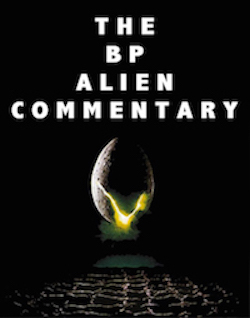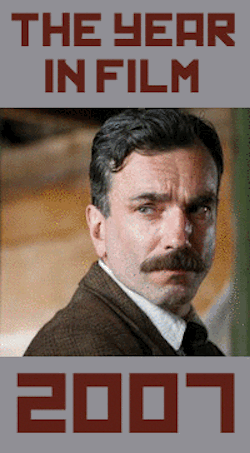Words on Bathroom Walls: Everyday Horror, by Tyler Smith

Having a mental illness can often seem like living in the midst of a waking nightmare. You can’t always trust what you see, hear, or think. And the few things that would seem to provide stability are often those that the afflicted person is most likely to be suspicious of. That all of this internal turmoil can disguise itself to onlookers as eccentricity or rudeness or general emotionality is a cruel irony, because it can prevent those who need the most help from actually receiving it. Unlike something as concrete as cancer or heart disease, mental illness sometimes doesn’t even seem like an illness at all, leading some skeptics to suggest that it can be cured through vitamins and exercise, and that to treat it as anything other than a misguided plea for attention only indulges those who just need to suck it up and walk it off.
Thor Freudenthal’s Words on Bathroom Walls, based on the novel by Julia Walton, attempts to dramatize the tragedy of mental illness for an audience that is perhaps most likely to stigmatize it: teenagers. As a young person’s emotional and intellectual capacity begins to grow, heightened by hormones and social pressure, behavior that is unpredictable and uncomfortable can trigger confusion, scorn, and ostracism. Life is difficult enough for a person in physical and emotional transition without having to navigate the difficult geography of someone else’s imbalanced mental state. The film suggests that a similar response can be found in authority figures, whose job, it seems, is to maintain order and consistency above all else. While some mental disorders thrive on such things, even those can prove unpredictable, which is a dirty word for those in charge.
The story of the film is fairly straightforward, with the filmmakers choosing to let the complexity be more internal than external. A young man named Adam (Charlie Plummer) has schizophrenia, causing him to see and hear things that aren’t there. His hallucinations manifest themselves in three archetypal characters: a hopeless romantic, a horndog, and a baseball bat-wielding tough guy. Each of these characters represents a different aspect of Adam’s psyche, in a creative choice that is perhaps a little too neat and orderly. Adam is rarely thrown off by the presence of these hallucinations, and the film too often treats them as cutesy imaginary friends. There is, however, a fourth presence; not a figure at all, but a black mist that pours into the room as a monstrous voice whispers toxic lies in his ear; lies about his own worthlessness and the world’s unwillingness to love him. These are the moments that have the most power, playing up the inescapable horror that can accompany mental illness.
While the depiction of the hallucinations occasionally dips into oversimplification, Charlie Plummer’s performance conveys the true difficulty of living with this unusual affliction. Though the character is given fairly standard “wise beyond his years” dialogue, Plummer chooses to embrace the confusion and frustration of Adam’s situation. Yes, he can speak rather eloquently about his illness, but that is a far cry from fully understanding it. As such, Plummer plays his character with constant care, treating every interaction as extremely delicate. Knowing how people in the past have responded to his illness, Adam chooses to keep it hidden from any new acquaintances, including his new crush (Taylor Russell), who has secrets of her own. To maintain the appearance of normalcy, Adam keeps a tight hold on himself, lest he accidentally get careless and give too much away. The perpetual strain and fragility with which Plummer plays the character do more to communicate the everyday burden of mental illness than even the best hallucinatory visual effects ever could. It’s a solid performance and establishes Charlie Plummer as one of the more talented actors of his generation.
The supporting cast is equally reliable, with Molly Parker playing Adam’s patient-but-desperate mother, Walton Goggins as her detached boyfriend, and Beth Grant as an unsympathetic school administrator (is there any other kind in a film like this?). Then there’s the always-dependable Andy Garcia, who plays the head priest at Adam’s Catholic school. The priest is clearly intelligent but is not above using Biblical platitudes, even when he sees they’re not working. The character isn’t out-of-touch so much as in a rut, which is certainly not going to cut it when trying to give advice to a young man with schizophrenia. As the priest begins to engage with Adam on a deeper level, both characters come out a little wiser. Garcia seems to understand this character inside and out, and his effortless, humanistic performance is a pleasure to behold.
Of course, so much of Words on Bathroom Walls could be seen as by-the-numbers and overly-sentimental, and that would be a fair assessment. Like Love, Simon before it, this film has an after-school special facility to it that one could easily mistake with disposability. And while there are other movies that have dealt more honestly with the true ugliness of mental illness (with David Cronenberg’s Spider and Jeff Nichols’ Take Shelter being what I consider to be the gold standard), this nevertheless well-made, emotionally-effective film serves a valuable purpose. It encourages its audience to look at those that society would rather forget about and forces it to see the tragedy and, ultimately, the humanity underneath. It allows us to grieve over the sad realities of living with a mental illness while still reminding us that there is still a real person underneath it all.
It’s an important message for a younger audience. And, frankly, as our society becomes increasingly comfortable with classifying people solely by how they differ from one another, this simplified exhortation about our shared humanity may prove to be relevant not just to teenagers, but to audiences of all ages.





























I thought you might be interested in this review from a woman who actually has schizophrenia:
https://www.youtube.com/watch?v=S7l766IzUGo